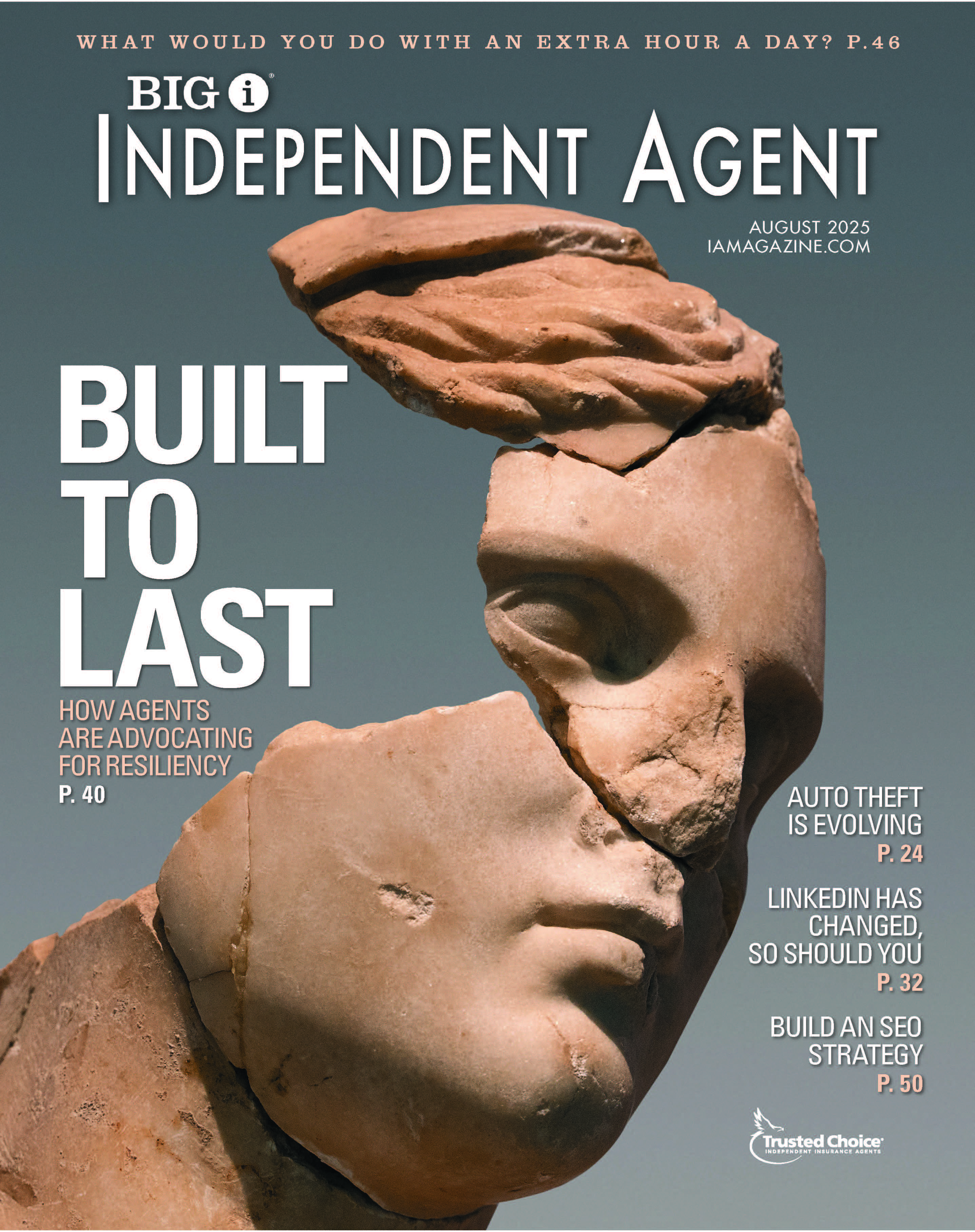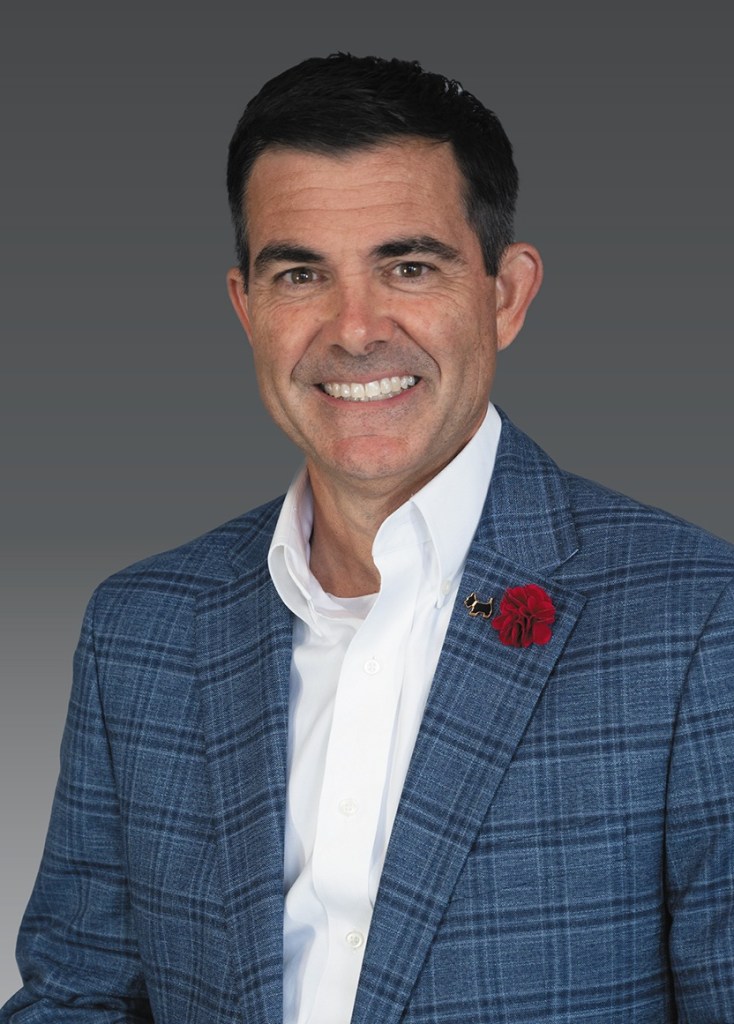Diversity Driven
By: Russ Banham
| Confucius once remarked that he had walked along the Great Wall of China every day since he was a child, and while he had grown older, everyone else stayed the same age. Were the great philosopher to walk down the streets of many American cities and suburbs today, he might comment that while he continued to age, everyone else changed remarkably. The fabric of America—its people—is vastly different than it was a generation or two ago—no surprise to anyone. What is surprising is the relatively high number of independent agencies that are now reaching out to these diverse ethnic and other demographic groups to market their carriers’ products and their own services. Jumbo, small and new agencies are generally more likely than agencies in other size categories to cite the marketing importance of minority groups, but many agencies of all sizes are recognizing the significances. Women, Latino and Hispanic, African-American, Asian-American and LGBT groups are growing in importance for both personal and commercial lines business every day. And hiring individuals from these groups is just one of many ways to make the sale. One agent who is successfully building a book of business by marketing to these different ethnic and demographic groups is Juan Padron, who is also the chair of the Big “I” Diversity Task Force. Padron, a partner and business manager at Safeguard Insurance Agency in McAllen, Texas, offers this advice for his fellow independent agents: “There is a tendency to think of different ethnic and demographic groups as emerging markets, but the truth is they are no longer emerging. They have emerged. Period. Walk around virtually every community today and you will notice the change.” The key to garnering business in these markets, he adds, is to recognize its importance first, and then develop ways to cultivate the opportunities. Melted Pot Padron has done just that at his agency, if for no other reason than he had to. McAllen, which is near the U.S. border with Mexico in the Rio Grade Valley, is approximately 87% Hispanic. “For us, diversity means quite something else,” Padron laughs. “Arguably we are in the same situation as agencies in the Midwest, where the population is largely Caucasian. But, the reality about all forms of marketing is that it extends beyond cultural and ethnic barriers—it’s really all about the values of the people you’re serving. Our goal is to determine what these values are and then crate ways that differentiate our proposition from other agencies in the region.” Evidently, Padron is winning this battle. He and his brother, who also is a partner in the business, formerly worked for a captive agency in the area. “Actually, it was one of the three biggest agencies for this captive in the country,” he says. “We decided to go independent in 2004, and it has been nothing but up since then.” Similar success found HNH Insurance Partners, which also is owned and managed by two relatives; in this case, a husband and wife team. “I’m Chinese-American, born in Taiwan, and my wife [Andrea Hoang] is Vietnamese-American,” says Robert Su, partner at the Houston-based agency. “We built the agency over the past three years by focusing on two demographic groups; in particular, Asian-Americans and women.” In this regard, Hoang is something of a powerhouse. Through her family network, she has been able to arrange introductions to other successful Vietnamese-Americans in the sprawling city, many of them female entrepreneurs like herself. “I’d estimate that 80% of our customers are Vietnamese, and of this percentage, about 70% are women,” Su says. “They range from high-end accountants and attorneys to small businesses like commercial real estate firms. The other 20% of our book runs the gamut, including Latin-American, Jewish and Caucasian; most of this [is] personal lines. After all, we speak Chinese, Vietnamese and English here.” The 2012 Agency Universe Study by Future One, a cooperative effort of the Big “I” and independent agent carriers, indicates that 20% of respondents consider Asian-Americans among their most important marketing targets, citing the Chinese-American market (74%), in particular. Next up was Vietnamese-Americans (57%), Asian Indian (52%, Japanese (44%), Korean (40%), Pacific Islander (35%) and Filipino (34%). Another agency, Coughlin Group Inc., has long marketed to the gay and lesbian communities in Calabasas, Calif., where the agency is headquartered (it also has offices in Manhattan and Larchmont, N.Y.). Tom Coughlin, president of the eponymous firm, actually began marketing to the LGBT community before coming out as gay himself. He and his brother bought the 65-year-old business in 1997 from their father, who did not know Coughlin was gay. “It would’ve been too much of a shock,” he explains. At the time, the agency had a few gay clients. All this would soon change. “I remember this marketing brochure from Chubb that had a gay couple on the cover,” Coughlin says. “The policy made no difference between a married couple and a domestic partnership. It was the only policy and advertising material of its kind at the time, and it had a powerful impact on me.” So powerful that Coughlin subsequently wrote a letter to Chubb thanking the insurer for the marketing brochure, and commenting that his agency would be backing the Empire State Pride Agenda, a statewide educational and political advocacy organization working toward equality and justice for the LGBT community. “I wrote that their backing of Empire State Pride had given me the courage to also back it, as well as other gay initiatives,” he says. “If a company as old and well-respected as Chubb said this was okay, then it couldn’t be all that bad, I explained in my letter. And that’s when I came out to my parents and friends.” Today, the agency has a substantial gay and lesbian clientele, as well as customers from other demographic and ethnic groups. Much of this business is personal lines, although it also writes a fair amount of commercial lines business to boot. “We don’t perceive the agency as a ‘gay’ agency, and in fact write more insurance for straight people than gay people,” Coughlin says. “Today, when I mention a policy for two gay domestic partners, insurers don’t raise an eyebrow.” Reaching Out These agents and others are marketing to their respective clientele by hiring people just like the prospective customers they’re hoping to reach. Coughlin, for instance, has hired three gay and lesbian individuals over the years, including one in IT and another in sales. “Frankly, he’s our best salesperson—just phenomenal,” he says. “Nevertheless, most of the staff of 25 here is straight.” CAL Insurance Agency Inc., a San Francisco-based agency that has built a significant book of business marketing to the city’s gay, Asian and Hispanic communities, also has employed individuals from these different groups. “We were once on the cover of Safeco’s magazine because of the diversity of people we had here on the staff,” says Scott Hauge, the agency president. Other marketing strategies are more traditional. Hauge and Coughlin, for instance, have both advertised in gay-themed publications, and the latter also is a member of several gay-oriented organizations like GLAAD and Empire State Pride Agenda, while his mother sits on the board of PFLAG (Parents, Families and Friends of Lesbians and Gays). But, as Hauge points out, “If you don’t have the producer backup it’s just not very effective. Getting solid producers—whatever their ethnicity or lifestyle—is difficult.” Su has found that face-to-face personal interactions and networking has invited most of the agency’s business. “We could advertise in publications geared to Asian-Americans, but there are already so many insurers doing this it would be hard to stand out in the clutter,” he says. “On the other hand, we have found some success reaching out to members of the Asian Business Chamber of Commerce.” Ricardo Del Rio, vice president of Actinver Insurance Services in San Antonio, also markets to a largely Hispanic community. He, too, believes that the personal touch is vital to building business. “I’m a member of the Hispanic Chamber of Commerce, as well as the greater Chamber of Commerce, and I’m active in doing things for the community,” he says. “That’s really made the difference.” For instance, he is the chair of a committee that supports a local children’s soccer league on the south side of the city. “The kids have a passion for the sport and were playing on the streets,” Del Rio notes. “For three years, my agency has helped finance their uniforms and fees, and we’re hoping to soon have them playing on grass.” The Agency Universe Study backs up the success of these varied marketing efforts, noting that 11% of producer respondents and 13% of their personnel speak languages other than English. Additionally, 18% of producers employ members of significant or growing demographic groups, and 17% provide written materials in languages other than English. Kelly McDonald, president of Dallas-based marketing firm McDonald Marketing, applauds these efforts. She has been recruited by the Big “I” Diversity Task Force to develop marketing guidelines and tools that all agents can use to reach out to these myriad ethnic and demographic groups; these tools will be available on the Big “I” website within the next few months. McDonald also was involved in the development of several webinars focused on marketing to each group, including women, Asian-Americans and other ethnic communities, and even young people in Generations X and Y. “One thing we have learned on the task force is that no matter who the target market it, whether it’s Hispanic agricultural workers in Washington state or Pakistani doctors in New York City, getting involved in their communities and showing them you care is the best way to reach them and secure business,” says McDonald, author of the book, “How to Market to People Not Like You.” Community involvement and initiatives foster a high level of mutual trust, “and in a vitally important business like insurance, trust is everything,” McDonald asserts. “It’s all about the human connection—no matter who the other person is, what they look like or what they believe.” With that, Confucius would agree. Russ Banham is an IA senior contributing writer. |









